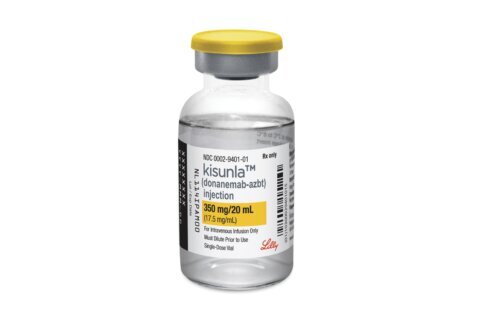Do you eat enough veggies every day? If so, you’re the 1 out of 10 adults that get it done. A whopping 90% of Americans fail to eat the recommended daily amount of vegetables, according to the Centers for Disease Control and Prevention.
In my latest cookbook, “Up Your Veggies: Flexitarian Recipes for the Whole Family,” you’ll find simple, delicious and creative ways to increase your veggies at meals and snacks. But that’s only part of the story: Vegetables aren’t the only food that should be on your plate. Fruits, grains, healthy fats, milk and dairy foods, and protein (plant or animal-based) should also be part of your balanced plate.
About the Flexitarian Diet
The flexitarian diet is the combination of being flexible and being vegetarian. This term was coined over 20 years ago by the lovely registered dietitian and my friend Dawn Jackson Blatner in her 2009 book, “The Flexitarian Diet: The Mostly Vegetarian Way to Lose Weight, Be Healthier, Prevent Disease and Add Years to Your Life.”
The flexitarian diet, which was ranked no. 2 in U.S. News’s 2023 Best Diets, is also called a semi-vegetarian diet as you don’t eliminate animal products like meat and poultry, but rather incorporate them in smaller amounts. A flexitarian diet encourages some meat-free days or swapping animal-products with non-meat choices like fish, tofu, beans and lentils. In my cookbook, I provide you the flexibility to choose animal- or plant-based products. I always say “you do you,” which means you can swap one type of protein for another — whatever helps you meet your individual needs and likes.
[READ: Types of Vegetarian Diets.]
How to Make a Healthy Meal
Understanding how to create your meal is a skill that takes a little time and practice. Try these helpful steps:
1. Choose a plate that fits your needs. A standard 8-inch dinner plate is typical for someone on a 1,600 or 1,800 calorie diet. If you have lower calorie needs, switch to a 7-inch plate, while those with higher calorie needs should use a 9-inch plate.
2. Fill half your plate with fruits and veggies.
3. Fill one-quarter of your plate with grains, preferably whole grains.
4. Fill the last one-quarter with protein, either plant-based or animal-based.
5. Add a serving of low or nonfat milk, cheese or yogurt.
6. Don’t forget some healthy fat such as oil, a vinaigrette or avocado.
You also want to keep the prep and cooking methods healthier. Here are a few ways that I do this:
— Use herbs and spices instead of a lot of salt to add flavor.
— Use healthy cooking methods such as baking, roasting, sautéing (using only 1 to 2 tablespoons of oil), stir-frying, and boiling instead of deep frying.
— Use butter sparingly: one teaspoon (or pat) of butter for a slice of bread or use 1 to 2 tablespoons of unsalted butter when cooking up a dish and compliment it with a healthy oil.
— Mind your portions by using the appropriate plate. If you’re still hungry after the meal, take a second helping of veggies.
— Minimize adding sugars. Only use a small amount of sugar to add sweetness to nutrient-filled dishes.
[READ: Fresh Herbs vs. Dried Herbs: Which Is Better?]
Making Individualized Swaps
In my cookbook, I have an entire chapter designated to salads and one to bowls. Many of the salads and all the bowls are balanced as described above. For the bowls, instead of using a plate, use a bowl, which happens to be the latest trend! You can find vegetarian bowls, fish-based bowls and bowls with chicken or beef. You can swap any of the proteins to plant-based proteins, to fish, or even swap one type of meat for another. The choice is ultimately yours.
2 Flexitarian Recipes
Below are two recipes from “Up Your Veggies,” where you’ll find suggestions to make a flexitarian swap for the protein.
[Read: Air Fryer Recipes.]
Lentil Salad With Chopped Vegetables
Lentils are an easy plant-based protein to add to salads. You can take this salad to work and enjoy it as a main dish with a whole wheat roll or a crusty piece of bread.
Serves 4, Serving size: 2 cups
Ingredients:
— 4 cups fresh arugula.
— 1 cup canned brown lentils, drained and rinsed.
— 1 English cucumber, chopped.
— 1 cup cherry tomatoes, halved.
— ¼ medium red onion, chopped.
— ¼ cup red wine vinaigrette (homemade recipe or store bought).
— ¼ cup crumbled feta cheese.
— 2 tbsp sliced almonds.
1. In a large bowl, combine the arugula, lentils, cucumber, tomatoes and onion. Drizzle the red wine vinaigrette over the salad; toss to coat. Sprinkle with feta cheese and almonds. Serve immediately.
Toby’s Tip: Swap the lentils for black beans or pinto beans or canned chunk light tuna or salmon packed in water.
Nutrition Information (per serving):
— Calories: 209.
— Total fat: 13 g.
— Saturated fat: 3 g.
— Protein: 9 g.
— Total carbohydrates: 17 g.
— Fiber: 6 g.
— Sugars: 5 g.
— Sodium: 174 mg.
— Cholesterol: 8 mg.
Coconut Lime Rice and Shrimp Bowls
The veggies in this bowl come from the salsa: jalapeños, onion and garlic balance the sweetness of the pineapple and complement the buttery shrimp. If you want more veggies, add ¼ cup cooked corn to each bowl.
Serves 4, Serving size: 1 bowl.
Ingredients:
— 1 cup white basmati rice.
— 1 cup light coconut milk.
— 1 cup water.
— Zest and juice of ½ limes, divided.
— 2 tbsp chopped fresh cilantro.
— ½ tsp salt, divided.
— ⅛ tsp ground black pepper.
— 1 lb. raw shrimp (size 26/30), thawed if frozen, peeled and deveined.
— 2 tbsp unsalted butter.
— 2 garlic cloves, minced.
— 1 green onion, chopped.
— 2 cups homemade pineapple salsa or store-bought.
1. In a medium saucepan, bring the rice, coconut milk and water to a boil over high heat. Reduce the heat to medium-low, cover and simmer until the rice is tender, about 15 minutes. Set aside for 10 minutes, then fluff with a fork. Stir in 2 tbsp lime juice, lime zest, cilantro, ¼ tsp salt and pepper.
2. Sprinkle the shrimp with the remaining ¼ tsp (1 mL) salt.
3. In a large skillet, heat the butter over medium heat until melted. Add the garlic and remaining 1 tbsp lime juice; cook, stirring constantly, until the garlic is fragrant, about 30 seconds.
4. Add the shrimp; cook, flipping once, until opaque, about 4 minutes.
5. Sprinkle with green onion.
6. Into each of four bowls, spoon ⅓ cup rice and top with equal amounts of shrimp.
7. Finish each bowl with 1/2 cup pineapple salsa. Serve immediately.
Toby’s Tip: Swap the shrimp for 1 lb. diced skinless, boneless chicken breasts. Cook for 8 minutes in step 3.
Nutrition Information (per serving):
Calories: 286.
Total fat: 11 g.
Saturated fat: 7 g.
Protein: 24 g.
Total carbohydrates: 23 g.
Fiber: 1 g.
Sugars: 9 g.
Sodium: 601 mg.
Cholesterol: 198 mg.
Recipes from “Up Your Veggies: Flexitarian Recipes for the Whole Family” by Toby Amidor. Published by Robert Rose Books. All Rights Reserved.
More from U.S. News
Hybrid Foods for a Flexitarian Diet
The Best Flexitarian Diet Recipes You Need to Try
How to Cook and Use Quinoa: Recipe and Nutrition Guide
Flexitarian Recipes for Beginners originally appeared on usnews.com







